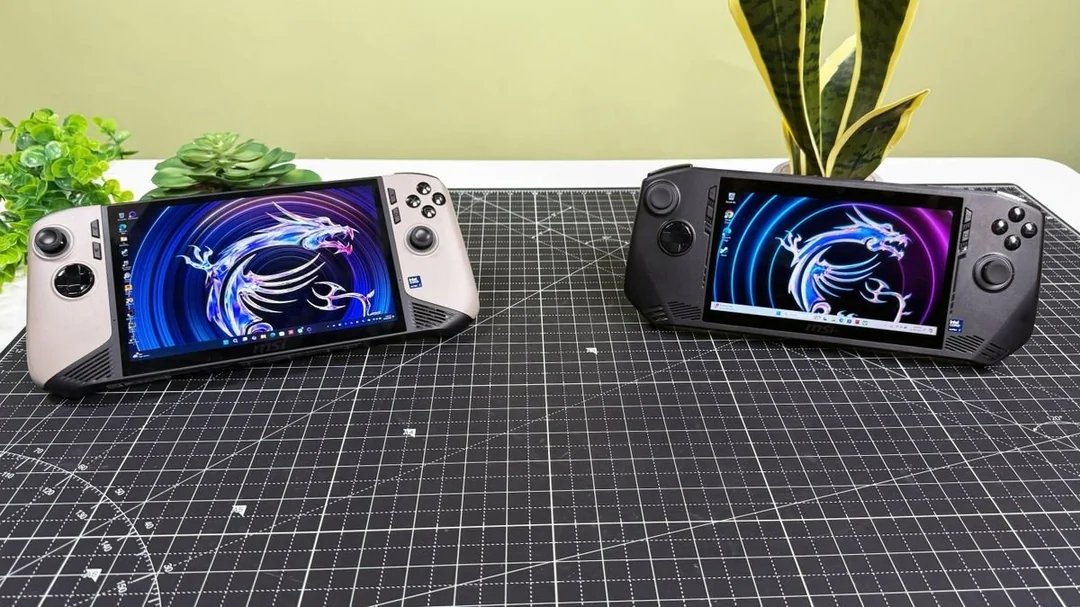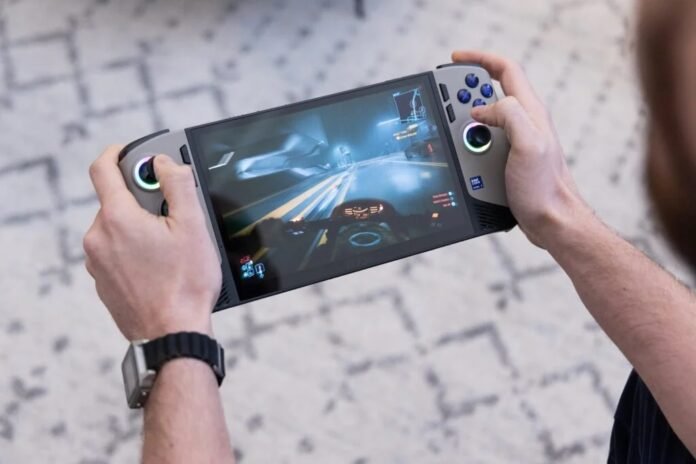
The Silent Rise of Intel in a Market Dominated by AMD
In the current handheld gaming landscape, AMD has long been the go-to choice for manufacturers. Its Ryzen Z1 and Z2 Extreme chips have set the standard for combining high-performance processing with efficient power usage. Devices like the Asus ROG Ally and Lenovo Legion Go 2 have cemented AMD’s dominance by choosing its custom silicon to power their systems.
But behind the scenes, Intel—a former titan in the CPU industry—is laying the groundwork for a striking return. Despite a late start in the handheld sector, recent performance tests and product reveals suggest Intel might not only catch up, but potentially surpass AMD in some key areas.
MSI Claw 8 AI+: A Telling Proof of Concept
The clearest indicator of Intel’s rising ambitions is the MSI Claw 8 AI+, a handheld powered by the Intel Core Ultra 258V. While this chip wasn’t even designed specifically for handheld gaming, early benchmarks show that it holds its own impressively—even when going up against AMD’s best.
Comparisons between the Claw 8 AI+ and the upcoming Claw A8 (which uses AMD’s Ryzen Z2 Extreme) reveal a surprisingly tight race. In games like Assassin’s Creed Shadows and Monster Hunter Wilds, the performance delta is minimal—often around just 4 to 5 FPS.
This is significant because AMD’s Z2 Extreme is a chip built from the ground up for handheld gaming, boasting Zen 5 architecture and RDNA 3.5 graphics. Meanwhile, Intel’s 258V chip wasn’t optimized for this environment. The narrow performance gap underlines just how competitive Intel’s general-purpose chips already are—and how much potential they hold with future refinements.
Z2 Extreme vs. Z1 Extreme: Not the Leap We Expected
Independent benchmarker ETA Prime recently put the Ryzen Z2 Extreme up against the Z1 Extreme—a two-year-old chip still found in many current-gen devices. While the Z2 Extreme does show advantages at lower TDPs (especially below 15W), the performance gains in high-end AAA titles like Cyberpunk 2077 or Shadow of the Tomb Raider were less than groundbreaking, particularly at a 25W power limit.
For gamers expecting a generational leap, this could be underwhelming. If your existing device still delivers acceptable frame rates, there may be little incentive to upgrade—especially if the performance delta isn’t night-and-day.
This opens a door for Intel to step in with something fresh, especially if it can deliver performance-per-watt efficiency along with robust graphics capabilities.
Intel’s Counterplay: Lunar Lake, Panther Lake, and AI Upgrades
Intel isn’t just reacting—it’s actively planning an assault on the handheld gaming market. According to Robert Hallock, Intel’s AI and technical marketing chief, the company is working on chips optimized for handhelds. Upcoming architectures like Lunar Lake and Panther Lake are at the heart of this strategy.
Highlights of what’s coming:
- Up to 50% more GPU cores, thanks to new Xe3 architecture
- Enhanced AI upscaling capabilities, designed to rival or outperform Intel’s own XeSS 2
- Optimized power consumption, crucial for extending battery life in portable gaming
Combined, these improvements could position Intel’s next-gen chips as true alternatives—if not outright successors—to AMD’s APUs. With Intel’s emphasis on AI acceleration, these chips might also introduce smarter ways to render games, allocate system resources, and boost frame rates without brute-forcing the hardware.
The Ecosystem Problem: Intel’s Biggest Challenge Yet
Of course, hardware isn’t everything.
One major roadblock for Intel is ecosystem support. SteamOS, widely regarded as the most optimized Linux-based platform for handheld gaming (especially on devices like the Steam Deck), currently supports only AMD’s APUs. That leaves Intel-powered handhelds out in the cold—relying instead on Windows or other less gaming-tuned operating systems.
If Intel wants to make a serious dent in this space, it needs to either:
- Collaborate with Valve to enable SteamOS support on Intel hardware
- Develop or sponsor a new lightweight OS designed for gaming on handhelds
- Optimize Windows drivers and firmware specifically for small form factor devices
Without solving this ecosystem puzzle, even the best chip will struggle to deliver a seamless experience.
Hardware Adoption: Who Will Take the Leap?
So far, flagship handhelds have stuck with AMD. But what happens when a major brand bets on Intel’s upcoming Lunar Lake or Panther Lake chips?
If a company like ASUS, Lenovo, or even Valve takes the plunge, it could trigger a shift in perception—and market share. Just as “Intel Inside” became a gold standard for PCs in the 1990s and early 2000s, we could soon see a resurgence of that badge on high-end portable gaming devices.
And if Intel’s chips deliver longer battery life, better thermals, or smarter AI features? Gamers and manufacturers alike will take notice.
The Real Battle: User Experience Over Raw Specs
The fight between AMD and Intel isn’t just about who has the fastest clock speeds or more cores—it’s a battle of ecosystems, usability, developer support, and long-term viability.
AMD still holds the advantage in native support, optimization, and brand familiarity within the handheld gaming space.
Intel, however, has the resources, momentum, and technological foundation to carve out a serious niche—especially if it executes a well-timed, well-supported product launch.
Conclusion: The Handheld War Is Just Getting Started
Handheld gaming is no longer a gimmick or niche hobby—it’s a fast-growing frontier where the lines between console and PC continue to blur. And while AMD has led the charge for years, Intel is gearing up for a bold return.
Whether or not it succeeds will depend on more than just chips. It will take partnerships, smart OS solutions, and community trust. But for now, one thing is clear:
The next generation of handhelds may not have to choose between AMD and Intel—because Intel is coming back with a vengeance.

